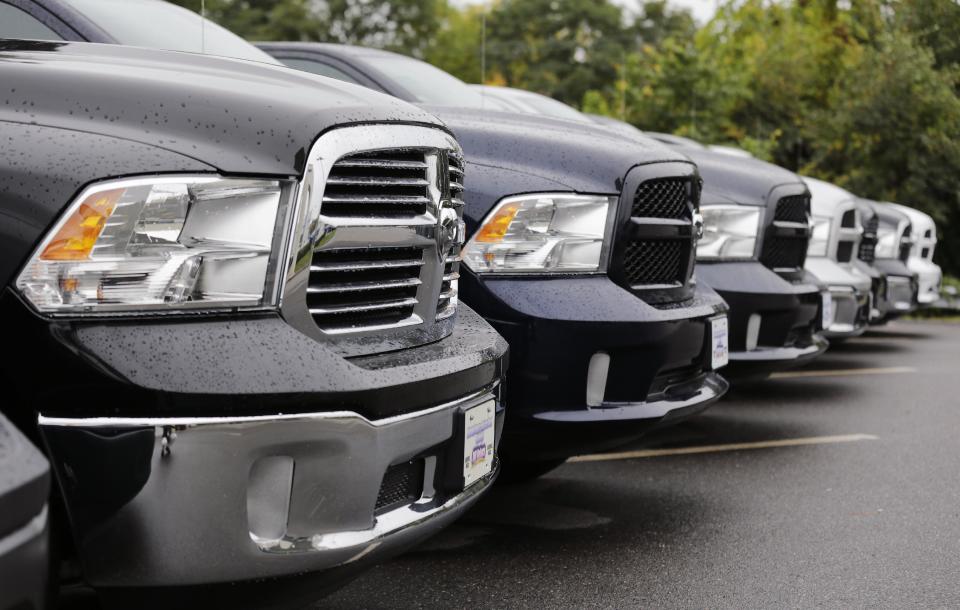
It’s as predictable as birds soiling your windshield: When gas prices fall, Americans buy bigger cars.
Falling gas prices are generally good news for consumers, since less money going into the tank means more money for other stuff. If gas prices fall by 50 cents per gallon and stay there for a year, the typical consumer’s disposable income rises by 1%, according to forecasting firm IHS. For somebody earning $50,000, that’s an extra $500. Spending rises by nearly as much, which helps the overall economy.
Drivers have been getting this type of break lately. Gas prices at the pump have fallen from about $3.75 per gallon in June to about $3.20 today. They’re below $3 in at least six states, according to the American Automobile Association, and pump prices are likely to fall further as the global oil market works off a glut that could last for months.
There’s a dark side to cheap gas, however, because falling fuel prices—which usually don’t last—lead many car buyers to purchase bigger, thirstier vehicles—which is a long-term commitment.
The numbers from September tell the story. With gas prices falling, light trucks—which include pickups, SUVs and crossover vehicles—accounted for 53.4% of sales, with passenger cars making up the other 46.6%, according to Autodata. Back in May, when gas prices were near $3.75—their high for the year—light trucks had a slimmer 52.1% market share. The difference might not seem huge, but it adds up to about 16,000 additional truck sales per month.
The average mileage of all vehicles sold in September dropped from 25.8 miles per gallon the prior month to 25.3 MPG, an unusually large swing in just one month—especially given that manufacturers have been dramatically improving fuel economy in all vehicles, to comply with rising federal standards. The September drop was the largest since 2011, according to the University of Michigan Transportation Research Institute, which attributes the lower mileage to increased sales of trucks and SUVs.
Many of those light trucks sold in September were the giants of their class. Large SUVs such as the Chevrolet Tahoe and the Ford Expedition notched the biggest gains of any segment, with sales up 21.9% over the prior year. Crossovers, pickups and luxury SUVs were close behind. Sales of small cars, by contrast, rose by just 3.9%, with medium-sized cars up just 0.4%. For automakers and dealers, selling more big vehicles can be a bonanza. Profit margins on pickups and large SUVs can approach $15,000 per vehicle, while margins on smaller cars can be in the hundreds, if the automaker makes a profit at all.
Buyers don’t always think about the long-term costs they’re committing to when buying a bigger vehicle. Larger cars have higher prices to start with, simply because there’s more metal and other components, and engines often need to be bigger to move it all. And gas-mileage costs add up over time. Choosing the cheapest Jeep Grand Cherokee SUV (which averages 25 miles per gallon) over the cheapest Honda Accord sedan (31 MPG) would cost a typical driver an extra $280 per year in gas at $3 per gallon, and an extra $325 at $3.50.
There are many considerations that go into a car purchase besides gasoline costs, of course. Many families feel they need three rows of seats for carting around kids and their gear (including friends), which necessitates a large vehicle. In some cases buying one megahauler is cheaper than the alternative: buying two smaller cars.
Yet there’s an unmistakable correlation between rising or falling gas prices and the types of cars drivers buy, which suggests some buyers are influenced too much by the cost of fuel today. When gas spiked to $4 per gallon in the summer of 2008, demand for high-mileage hybrids and thirfty small cars surged. That helped undo the three Detroit automakers, which had a very weak stable of small offerings. Within six months, however, gas prices had plunged by nearly 60%, to $1.70 per gallon--and hybrids quickly fell out of fashion.
The shrewdest way to buy a car is to disregard monthly swings in gas prices and choose the most efficient model that meets your needs. It doesn’t make sense to buy a big SUV for daily commuting, nor would a Mini get a family of five to the soccer game. And if you want to factor in gas prices, it’s safe to assume they’ll go up. They usually do, sooner or later. LINK


